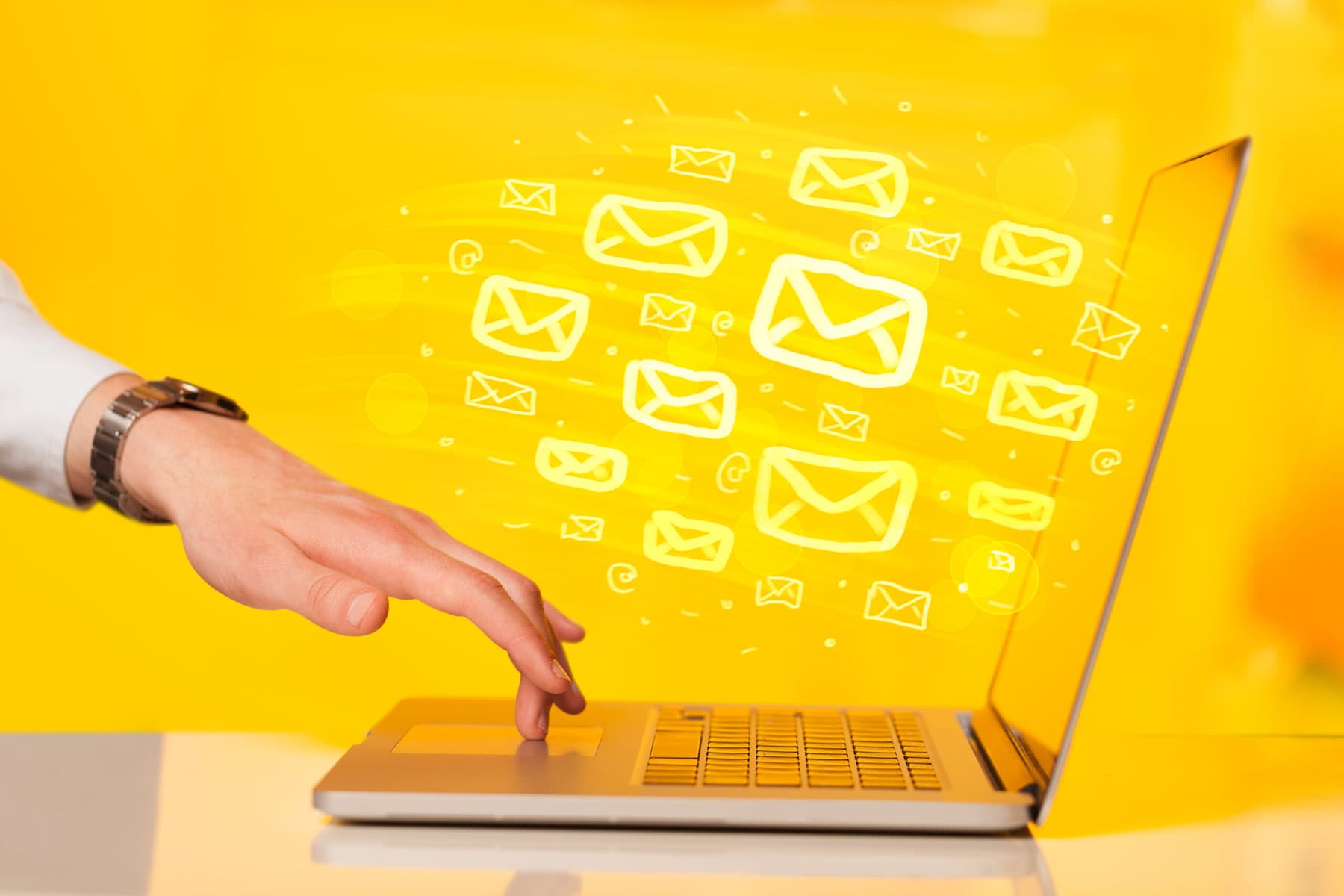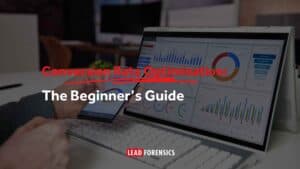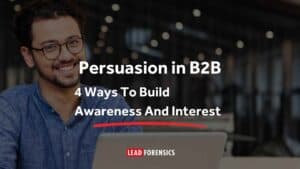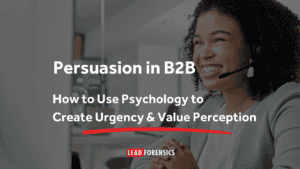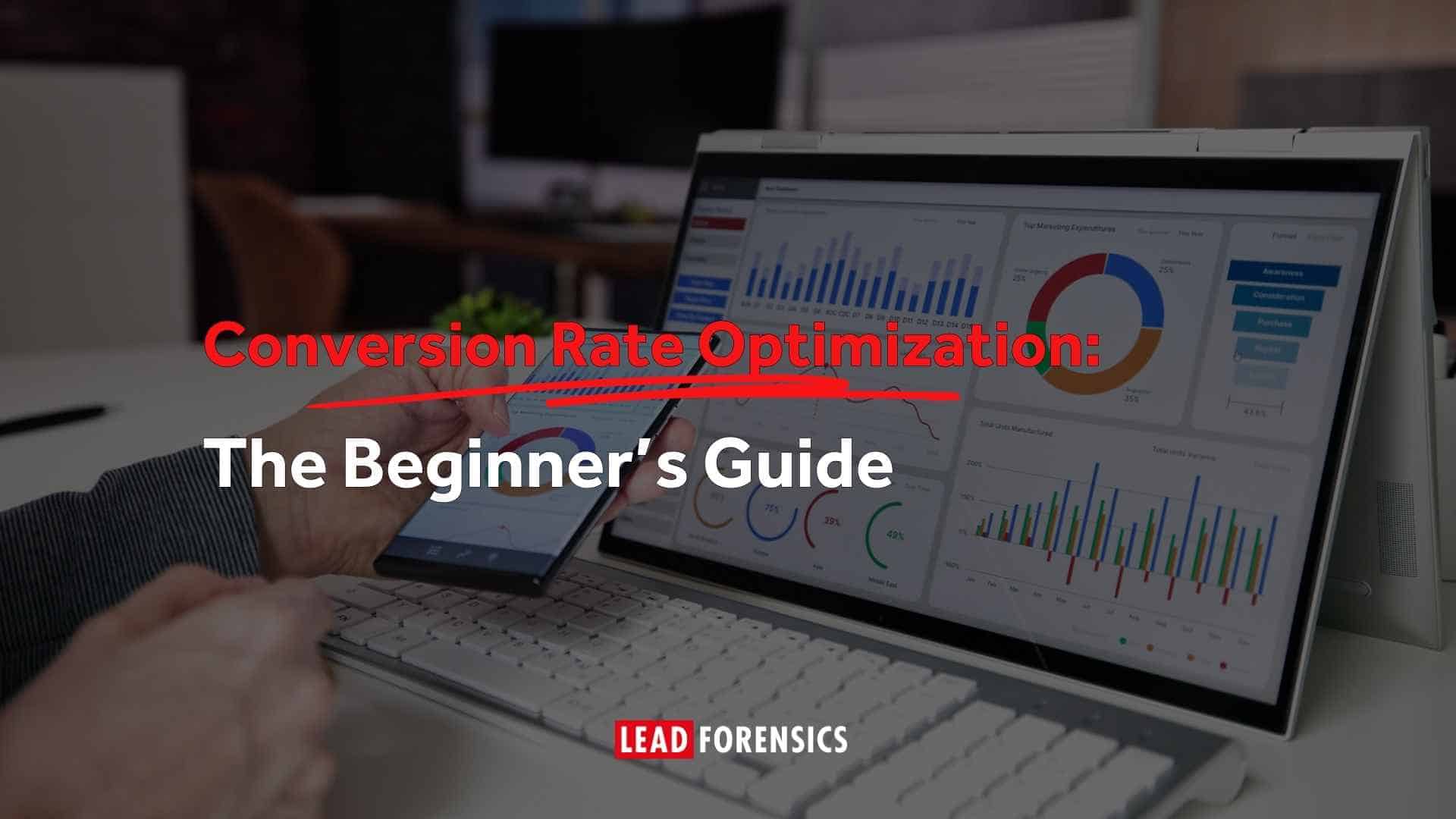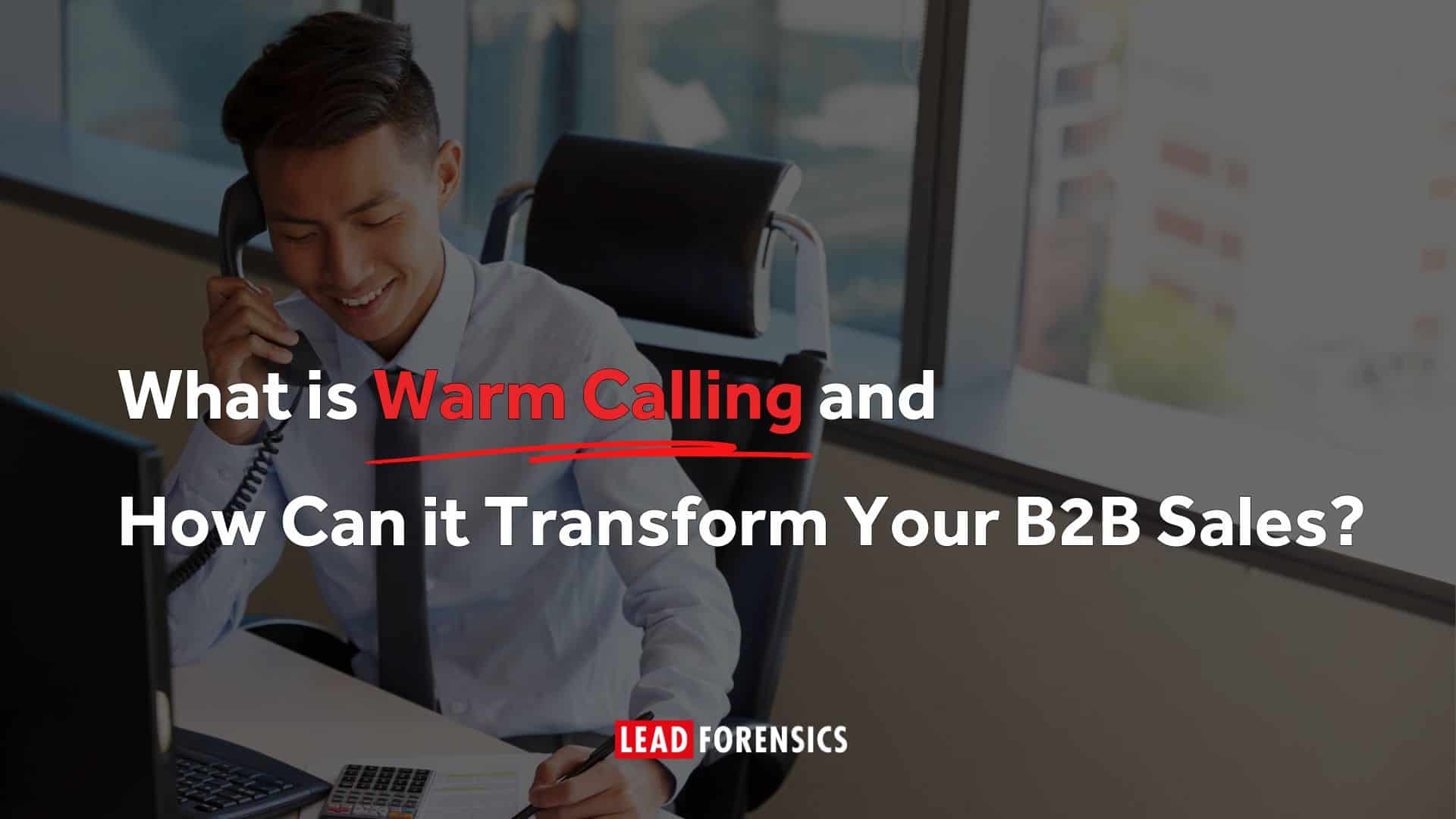Generic Subject Lines
In the fast-paced world of B2B email marketing, the importance of a compelling subject line cannot be overstated. Yet, one of the most common missteps is resorting to generic subject lines that fail to captivate recipients. Imagine your email as a sealed envelope waiting to be opened; the subject line is the first impression, and it sets the tone for what lies inside.
Vague or generic subject lines often fall flat, as they lack the personalized touch that modern recipients crave. However, the solution is simple: personalization. Addressing recipients by their names or mentioning their company in the subject line can yield remarkable results.
This personalized approach demonstrates that you’ve invested time in understanding their needs, fostering a sense of relevance and curiosity that encourages them to click “open.”
By taking this approach, you not only increase the likelihood of your email being opened, but you also establish a foundation of trust and engagement. Personalized subject lines demonstrate that you view recipients as individuals, not just faceless contacts on a list.
Remember, in the world of B2B email marketing, every open is an opportunity, and every opportunity can lead to a meaningful connection or conversion. So, ditch the generic and embrace the power of personalization in your subject lines – it’s a small tweak that can yield significant rewards.
Lacking Personalization
Gone are the days when a generic message could impress in the B2B realm. In the era of personalized marketing, failing to cater to your audience’s unique preferences and pain points is a major misstep. Sending out one-size-fits-all emails is like casting a wide net in hopes of catching a few fish – it’s inefficient and often yields lackluster results.
The remedy lies in harnessing the abundance of data available to you. With the right tools and strategies, you can dissect your audience into distinct segments based on factors such as industry, company size, pain points, and even past interactions.
By doing so, you’re not only acknowledging their individuality but also setting the stage for genuine engagement.
When you send tailored content that speaks directly to the challenges and aspirations of each segment, you demonstrate that you’ve done your homework and care about their success. This resonance can lead to higher open rates, more click-throughs, and ultimately, stronger conversions.
Furthermore, audience segmentation empowers you to optimize your messaging strategy over time. As you analyze the performance of different segments, you can fine-tune your approach and deliver increasingly relevant content that keeps recipients eagerly anticipating your emails.
In the modern B2B landscape, personalization isn’t a luxury; it’s an expectation. By leveraging the trove of data at your fingertips and shaping your communications around the specific needs and interests of your various audience segments, you’re not just sending emails – you’re initiating meaningful conversations that can build lasting, mutually beneficial relationships.
Overwhelming Content
In the realm of B2B email marketing, the battle for attention is fierce. A mistake that often hampers success is inundating recipients with lengthy, convoluted emails that leave them feeling overwhelmed. In a world where time is a precious commodity, such emails risk being swiftly relegated to the “read later” pile or worse – the dreaded delete button.
To circumvent this pitfall, prioritize conciseness and clarity. Craft your emails with a laser focus on delivering key information in a format that’s easy to scan. Bulleted lists, subheadings, and short paragraphs work wonders in breaking up content and making it more digestible.
The power of brevity shines even brighter when paired with a compelling call-to-action (CTA). Your CTA should be clear, specific, and situated in a prominent position. Whether it’s encouraging recipients to download a resource, register for a webinar, or request a demo, the CTA serves as the culmination of your email’s purpose.
By creating emails that are easy to skim, you’re respecting your recipients’ time while also ensuring that your message gets across. The modern professional’s inbox is a battleground for attention, and it’s imperative to make your content a swift and engaging read.
In the B2B email arena, less is often more. By distilling your messaging to its essence and providing a seamless path to action, you’re increasing the chances of not only getting your emails opened but also inspiring the sought-after click that propels your recipients towards conversion.
Ignoring Mobile Optimization
In the B2B landscape, accessibility is key, and overlooking mobile optimization can prove to be a costly mistake. With an ever-increasing number of professionals relying on mobile devices to manage their inbox, failing to cater to this audience segment could mean missing out on valuable engagement opportunities.
The ramifications of disregarding mobile optimization are clear: emails that appear distorted, require constant zooming, or worse, fail to load correctly on smaller screens. Such experiences frustrate recipients and swiftly lead to disengagement – hardly the impression you aim to make.
To address this issue, prioritize mobile responsiveness. Design your emails with a mobile-first mindset, ensuring that they adapt seamlessly to varying screen sizes. Buttons and links should be large enough for easy tapping, and text should remain legible without the need for pinching and zooming.
By embracing mobile optimization, you’re not just avoiding a negative user experience; you’re also ensuring that your message reaches its intended recipients in the manner you intended.
Remember, a great email experience on mobile can translate to increased open rates, click-throughs, and conversions, ultimately contributing to the success of your B2B email marketing efforts. So, as you craft your emails, don’t forget the little screens that wield considerable influence in today’s digital landscape.
Inadequate Testing
In the dynamic realm of B2B email marketing, assumptions can be risky business. Yet, the mistake of underestimating the power of A/B testing is all too common. This valuable tool, often overlooked, holds the potential to unlock insights that can dramatically enhance the effectiveness of your campaigns.
Imagine your email campaign as a laboratory where you meticulously experiment with various variables to discern what resonates best with your audience. A/B testing allows you to compare different elements, such as subject lines, calls-to-action (CTAs), and even content layouts, to pinpoint what drives the most engagement.
By conducting these tests, you’re not merely guessing; you’re making informed decisions based on real data. Did the personalized subject line lead to a higher open rate? Did the blue CTA button outperform the red one? These insights allow you to fine-tune your approach and align your strategies with your audience’s preferences.
Moreover, A/B testing cultivates a culture of continuous improvement. In the ever-evolving landscape of B2B marketing, adapting to changing preferences and behaviors is essential. By regularly conducting A/B tests, you’re positioning yourself to stay ahead of the curve and create campaigns that consistently resonate.
In the pursuit of optimization, A/B testing is your compass. It guides you toward refining your emails, ensuring that every aspect – from the first glance to the final click – is optimized for maximum impact. As you plan your next campaign, remember that success isn’t just about sending emails; it’s about sending the right emails, and A/B testing is your passport to that success.
Excessive Frequency
In the world of B2B email marketing, there’s a fine line between staying on your audience’s radar and becoming an unwelcome guest in their inbox.
The mistake of bombarding recipients with emails too frequently can lead to an unfortunate consequence – email fatigue. This phenomenon, characterized by disengagement, annoyance, and a surge in unsubscribes, can be detrimental to your long-term success.
Respecting your audience’s inbox space is paramount. Just as with any relationship, overwhelming your recipients with constant communication can lead to burnout. The goal is to strike a balance – maintaining a presence without becoming a nuisance.
Understanding this balance requires a combination of data analysis and empathy. Monitor engagement metrics closely; if you notice open rates and click-through rates declining, it might be time to reevaluate your sending frequency.
Put yourself in your recipients’ shoes – how often would you want to receive emails from a business? Listen to the cues your audience is giving you and adjust your strategy accordingly.
Additionally, consider segmenting your audience based on their engagement levels. Tailoring your sending frequency to each segment can help ensure that your most engaged recipients receive more frequent updates, while those who are less active are not overwhelmed.
In a world where attention is a precious commodity, maintaining an optimal sending frequency is crucial. By demonstrating that you value your audience’s time and attention, you’re more likely to foster positive relationships and create a receptive environment for your B2B email marketing efforts to flourish.
Neglecting Segmentation
In the intricate tapestry of B2B email marketing, the oversight of neglecting segmentation can be a significant stumbling block. Treating your entire email list as a homogenous entity limits your potential to deliver truly impactful messages.
Instead, harness the power of segmentation – a strategy that enables you to tailor your content to the unique preferences and pain points of distinct audience groups.
Segmentation transforms your communication from generic to personal, allowing you to craft messages that resonate on a deeper level.
By categorizing your audience based on variables such as industry, company size, buying history, and engagement level, you create the opportunity to speak directly to their needs. This tailored approach not only captures attention but also nurtures a sense of relevance and connection.
Imagine you’re addressing a room full of diverse professionals. To truly engage each person, you’d need to adjust your message to match their interests, challenges, and aspirations. Segmentation in email marketing mirrors this concept – it’s the means to reaching individual minds within a collective audience.
Through segmentation, you’re not only optimizing your messaging strategy but also paving the way for better data-driven decision-making. Analyzing the performance of various segments helps you understand what’s working and what’s not, allowing you to refine your tactics and continually improve your campaigns.
In the intricate dance of B2B communication, segmentation is your partner for creating harmony. It transforms your emails from generic broadcasts into personalized conversations, fostering deeper connections and increased engagement.
So, as you embark on your email marketing journey, remember that segmentation isn’t just a strategy – it’s the key to unlocking relevance and resonance in a sea of digital noise.
Misleading CTAs
In the intricate dance of B2B email marketing, the call-to-action (CTA) serves as the crescendo – the moment of decision for your recipients. Yet, the mistake of incorporating misleading CTAs can be a discordant note that disrupts the harmony of your campaign. The key to success lies in alignment: ensuring that your CTA is in perfect harmony with your email’s content and purpose.
Imagine inviting someone to a seminar on leadership, only for them to find themselves in a sales pitch for unrelated products. Such a bait-and-switch approach erodes trust and leads to swift disengagement. Your CTA is a promise, a commitment to the value you’re offering. Breaking that promise with a misleading CTA can lead to a tarnished reputation and lost opportunities.
The remedy is clarity. Your CTA should serve as a guiding star, illuminating the next step that recipients should take. It should seamlessly flow from the content, guiding them toward the logical progression of the relationship – whether that’s downloading a resource, signing up for a webinar, or scheduling a consultation.
Remember, B2B communication thrives on trust and authenticity. By keeping your CTAs clear, relevant, and congruent with your email’s purpose, you demonstrate integrity in your interactions. This integrity builds confidence, encouraging recipients to take action with the assurance that their expectations will be met.
In the symphony of email marketing, the CTA is your crescendo, the culmination of your carefully composed message. Keep it harmonious, in tune with your content, and true to your intentions. By doing so, you’re not just driving action; you’re orchestrating a seamless experience that builds trust, engagement, and enduring relationships.
Poorly Designed Emails
In the vibrant canvas of B2B email marketing, the aesthetics of your emails can speak volumes about your brand’s credibility and professionalism. Yet, the common misstep of poorly designed emails can undermine even the most compelling content. Visual appeal is your passport to making a lasting first impression that engages and resonates with your recipients.
Imagine entering a beautifully curated gallery and encountering a cluttered display – the experience would be jarring and disorienting. Similarly, an email with a chaotic layout, unclear typography, or inconsistent branding can alienate recipients. These design flaws impede comprehension and dampen the impact of your message.
Investing in professional design is akin to commissioning a master artist. It ensures that your emails are a symphony of visual elements – layout, color, typography, and imagery – that harmonize seamlessly. Clear hierarchy guides the recipient’s eyes, making it easy to absorb your message. Consistent branding cultivates recognition, further enhancing your brand’s reputation.
Moreover, design isn’t just aesthetics; it’s functionality. A well-designed email adapts gracefully to various devices and screen sizes. With mobile readership on the rise, a responsive design guarantees that your message maintains its allure, regardless of the platform.
In a landscape where perception matters, every email is a canvas on which your brand’s story unfolds. Professional design elevates this narrative, projecting a polished appearance that resonates with your recipients. By acknowledging the power of aesthetics, you’re not just sending emails – you’re creating immersive experiences that captivate, engage, and leave a lasting imprint.
Ignoring Analytics
In the realm of B2B email marketing, your campaigns are more than mere messages – they’re opportunities to learn, refine, and excel. Yet, the grave mistake of ignoring email metrics can be equated to setting sail without a compass. The beacon of analytics illuminates your path, offering invaluable insights into your campaigns’ performance and guiding your journey to success.
Imagine piloting a ship through uncharted waters. To navigate effectively, you need data about your vessel’s speed, direction, and surroundings. Similarly, analytics provide you with a comprehensive understanding of your campaigns – from open rates and click-through rates to conversion metrics. These insights unveil what’s working, what’s not, and where you can optimize.
Regularly reviewing email metrics is more than just a best practice; it’s a strategic imperative. With every campaign, you collect a treasure trove of information that can shape your future decisions. Did a certain subject line garner higher open rates? Did recipients engage more with a specific CTA? These data points offer a roadmap to enhance engagement and drive results.
Furthermore, data-driven decision-making transcends intuition. It’s not about guessing what resonates; it’s about understanding with precision. By heeding the lessons of analytics, you’re well-equipped to make strategic adjustments, refine your content, and fine-tune your approach based on concrete evidence.
In the realm of B2B email marketing, analytics is your guiding star. It transforms your campaigns from shots in the dark to calculated endeavors, enabling you to measure, learn, and evolve. By embracing the power of insights, you’re not just sending emails; you’re embarking on a journey of perpetual growth, where every message is a stepping stone toward email excellence.
Neglecting Unsubscribes
In the symphony of B2B email marketing, the notes of respect and transparency hold incredible resonance. However, the common oversight of neglecting unsubscribe processes can strike a dissonant chord. Just as engagement is pivotal, allowing recipients to gracefully exit your email list is equally essential for building trust and maintaining your brand’s reputation.
Imagine a scenario where your audience feels trapped in an endless loop, desperately searching for an escape route from your emails. Such a frustrating experience can lead to resentment and tarnish your brand’s image. In contrast, a smooth and hassle-free unsubscribe process demonstrates respect for recipients’ preferences and contributes to a positive user experience.
The solution lies in simplicity. Your unsubscribe option should be clearly visible and easy to use, avoiding hidden traps or convoluted steps. Just as you’d want to welcome new subscribers with open arms, you should extend the same courtesy to those who wish to depart.
In today’s hyper-connected world, transparency is the currency of trust. By providing a straightforward unsubscribe process, you convey your commitment to maintaining respectful relationships with your recipients. This not only prevents frustration but also preserves your brand’s credibility and goodwill.
Remember, B2B email marketing isn’t just about adding to your list; it’s about fostering connections that are meaningful and beneficial to both parties.
By acknowledging the significance of the unsubscribe process, you’re nurturing an environment of respect and trust, where every interaction – even a departure – contributes to the harmonious symphony of your brand’s reputation.
Neglecting Follow-Ups
In the dynamic landscape of B2B email marketing, the journey doesn’t end with the first touchpoint – it’s only the beginning. Yet, the oversight of neglecting follow-ups can be likened to leaving valuable connections on the table. Just as nurturing a sapling yields a strong tree, cultivating relationships through well-crafted follow-up emails can lead to ripe opportunities and thriving partnerships.
Imagine attending a networking event and exchanging business cards, only to never hear from those connections again. The same principle applies in the realm of email marketing. A failure to follow up after the initial interaction means you’re missing out on the chance to guide leads through the sales funnel, converting curious prospects into committed customers.
The remedy lies in drip campaigns. These orchestrated sequences of emails provide a nurturing pathway for leads, offering valuable content, insights, and solutions tailored to their needs. This consistent engagement showcases your dedication and expertise, positioning you as a trusted advisor in their journey.
Moreover, drip campaigns extend beyond transactional interactions. They enable you to sustain relationships by celebrating milestones, sharing updates, and offering ongoing value. This approach demonstrates that your engagement isn’t fleeting; it’s a lasting commitment to your audience’s success.
In the orchestra of B2B communication, follow-up emails are the harmonious chords that build a melody of engagement. By implementing drip campaigns, you’re not just closing the loop; you’re crafting a symphony of interaction that resonates long after the initial touchpoint. Remember, success isn’t just about capturing attention; it’s about cultivating relationships that flourish over time.
Conclusion
Mastering B2B email marketing requires vigilance, adaptability, and a commitment to learning from your mistakes.
By avoiding these 12 common pitfalls, you’ll be well on your way to creating impactful and engaging email campaigns that resonate with your B2B audience. Remember, successful email marketing is an ongoing journey that relies on continuous improvement and a dedication to delivering value to your recipients.
Harness actionable insights from Lead Forensics, the website visitor identification software. Identify visiting companies, tailor hyper-personalized email campaigns, and seamlessly integrate with marketing automation.
Transform insights into strategic actions, driving engagement and conversions in the B2B email marketing arena. Get a demo here today!
Good luck in your email marketing endeavors!


